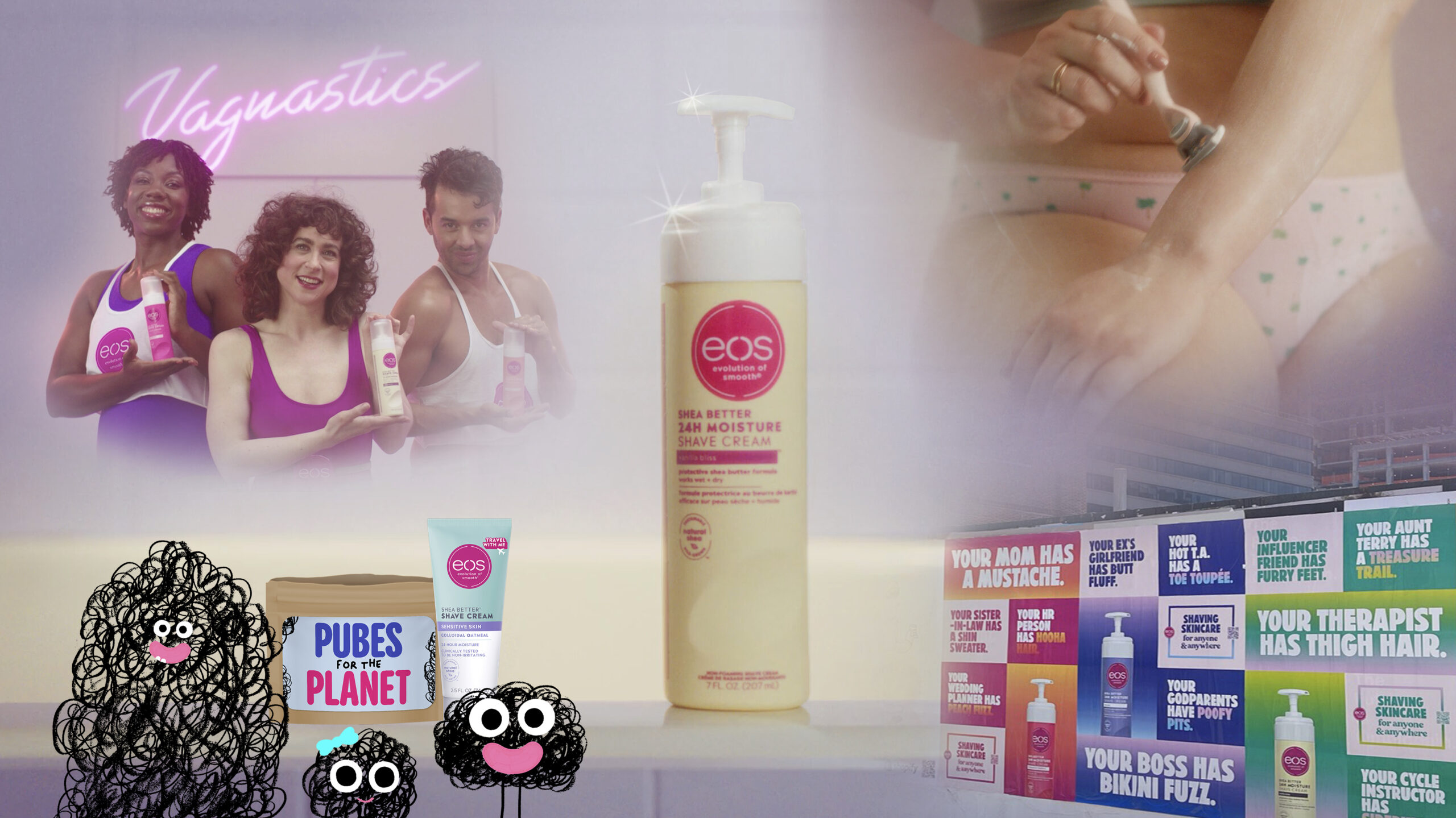
Images courtesy of Intermarché & Romance.
In recent years, much of the French grocery category was participating in an ongoing “price war” to attract mostly transitory customers.
In 2017, Intermarché began working with Paris-based agency Romance to challenge this category convention, shifting the brand’s orientation to a new mission, “Helping the French Eat A Little Better Every Day,” which included more emotionally resonant and highly visual creative work.
Since the relaunch, the brand has increased its market share, added new households to its customer base, and improved brand perception among French consumers – all without altering its prices or footprint.
The campaign won the Grand Effie in the 2018 Effie Awards France competition after earning a Gold in the Distribution category and a special recognition for Creative Impact.
We asked Jerôme Lavillat, Strategic Planner at Romance, to share how this work effectively drove growth for the brand.
What were your objectives for “Helping the French to eat a little better every day”?
JL: Over the past 15 years, French food retailers have waged a fierce price war, leveraging aggressive promotions and heavy discounting in their communications. Meanwhile, the expectations of French consumers have drastically changed over time: in 2016, their purchasing behaviours had nothing to do with what they were a few years earlier.
Indeed, more and more French consumers were trending towards healthier eating and were turning to new kind of retailers: delivery services of fresh products from the farmers’ fields to their doorsteps, organic shops, food co-ops, community-supported agriculture, package-free stores, etc. As a result, Intermarché, the third largest food retailer in France, faced struggles and failed to entice consumers. The brand’s market share declined, losing 345,000 households between 2014 and 2017. In 2016, Intermarché was perceived as one of the most old-fashioned brands in its category (its brand perception as being modern was ranked 7 out of 10). Hence, it became priority for Intermarché to revamp its brand image in order to meet new consumer expectations and make French people fall in love with Intermarché all over again.
Who was your primary audience for the campaign, and why?
JL: We made the choice to target the most quality-sensitive French people: the young families. Because they represent a majority part of large retailers’ earnings (43,1%), they tend to be more loyal and they are very sensitive to quality, we chose to prioritize targeting families with babies and children.
In addition, connecting with families who are sensitive to quality gave Intermarché the opportunity to win the hearts of new and more profitable customers who are less often promo-addicts (“promo-addicts” represented 14,8% of Intermarché’s customers vs 10,3% on average for competitors) and less fickle (from 100 clients who shop at Intermarché, 62.8% also go to E.Leclerc and 48.5% to Carrefour).
What was your strategic insight?
JL: Being the only brand to be so close to the agricultural world and to manufacture its own brands, Intermarché is the best positioned in the category to offer quality products and help French people to eat better.
How did you bring your idea to life?
JL: French consumers have become more and more sensitive to quality and increasingly attracted to new distribution channels. As such, we had to radically change the way we were talking to our audience and break the industry’s communication codes. And we did it.
We revamped Intermarché’s brand image: It’s all about the brand, not about the offer. We launched a brand campaign rather than price- and product-focused campaigns. By doing that, we radically changed the way Intermarché and French food retailers usually communicate. This is how Intermarché established its new brand ambition – to help people eat healthier every day – and at the same time deeply changed its brand image.
We used an emotional approach rather than a rational one. To reach as many people as possible, we moved away from rational speech and tangible proofs. We did not want to sound patronizing. Instead, we showcased a love story that everyone could identify with and hence connected emotionally with our audience.
Finally, we chose a cinematographic approach to optimize our impact. Food retailers usually invest a lot of money into TVCs. To stand out from the clutter, we had no choice but to break the industry’s codes. We decided to approach our film in a different way. We used a cinematographic treatment (realization led by Katia Lewkowicz), came up with a 3-minute long video that clashes with the short-length norm, and used a very popular soundtrack to connect emotionally with French people.
L’amour, l’amour
Why was breaking out of the “price war” and shifting the focus to your brand the right approach?
JL: As explained earlier, expectations of French consumers have changed and in 2016 their relation to nutrition had nothing to do with what it was a few years before. 26% of French people claim to be ready to consume less to consume better, 53% claim to be ready to pay more for quality products and 70% say they eat better than two years ago. If this quest for quality seems obvious today, it wasn’t the case in 2016. At that time, food retailers were still convinced that being perceived as the brand with the most attractive prices was the only thing that mattered. The truth is, consumers needed reassurance and a brand that helps them in their everyday quest for “better eating.” We were the first to realize it and to put the emphasis on the quality by creating an emotional link between the consumers and the brand. For the first time, a top food retailer (the third French food retailer) broke the category conventions by breaking out of the price war. It was a brave but vital choice, because it put Intermarché in a leading position.
The campaign also included a series of print and digital ads.
What role did this campaign play in driving growth for Intermarché?
JL: Since the campaign “L’amour, L’amour” launched, Intermarché’s business results have been outstanding. Intermarché won market shares during 18 consecutive 4-week periods of time.
In 2017, Intermarché increased its annual turnover by 4%. In other words, a +1.1 billion-Euro return for 53 million Euros invested in media.
Thanks to its brand shift, Intermarché managed to attract more customers, achieving increased in-store traffic (+13.3 millions cashier checkouts in 2017 vs 2016), the biggest performance in the market. Intermarché’s traffic growth was 5 times higher than its competitor’s traffic growth.
Furthermore, “L’amour, L’amour” made Intermarché attract a more profitable audience. Indeed, Intermarché won +0.2pt market share in the “promoblinds” customer segment, meaning customers not interested in promotions and discounts. Intermarché is the only brand (besides E.Leclerc) that enticed this target audience.
The campaign “L’amour, L’amour” had a very fast and direct impact on the brand image. 78% of French people who saw the campaign stated that the campaign improved the image they had of the brand. In 2017, Intermarché became the brand with the strongest evolution of brand modernity perception. Intermarché’s modernity perception increased by 1.1pt while the competition’s modernity perception decreased by an average of 0.35pt.
Simultaneously, the intent to visit Intermarché stores increased steadily. In fact, Intermarché’s progression (intent-to-visit) was 27 times higher than its competitors’ and above all the strongest in the category in 2017, with a 1.9pt increase vs 0.07pt average increase in the category.
Besides the campaign’s impact on consumers, were there any other results achieved?
JL: Apart from the business results, the campaign had an instant impact internally as well as on the way competitors were communicating.
On one hand, the campaign accelerated Intermarché’s pace of internal structural changes to elevate the client experience and products to the level of the campaign:
- Development of product innovations: healthier products with less sugar, lass salt, less additives (Intermarché private labels).
- Extension of the organic range (“bio”) and development of the largest organic range for children in the market.
- Restructuration and complete redesign of our loyalty program, with discounts allocated to healthy recipes; the development of quality indicators to guide consumers in their purchase decisions; and emphasis on healthy food innovations.
- Restructuration of the store concept to put the emphasis on traditional products and encourage people to cook at home more often.
On the other hand, the campaign has jolted the industry:
- Amongst the competition, 4 retailers have entered advertising pitches to assign a new agency: E.Leclerc, Système U, Auchan, Aldi. This is a phenomenal jolt in the industry’s history, as some brands have collaborated with one agency of record for 20 years.
Jérôme Lavillat is a Strategist at Romance Agency.





































































